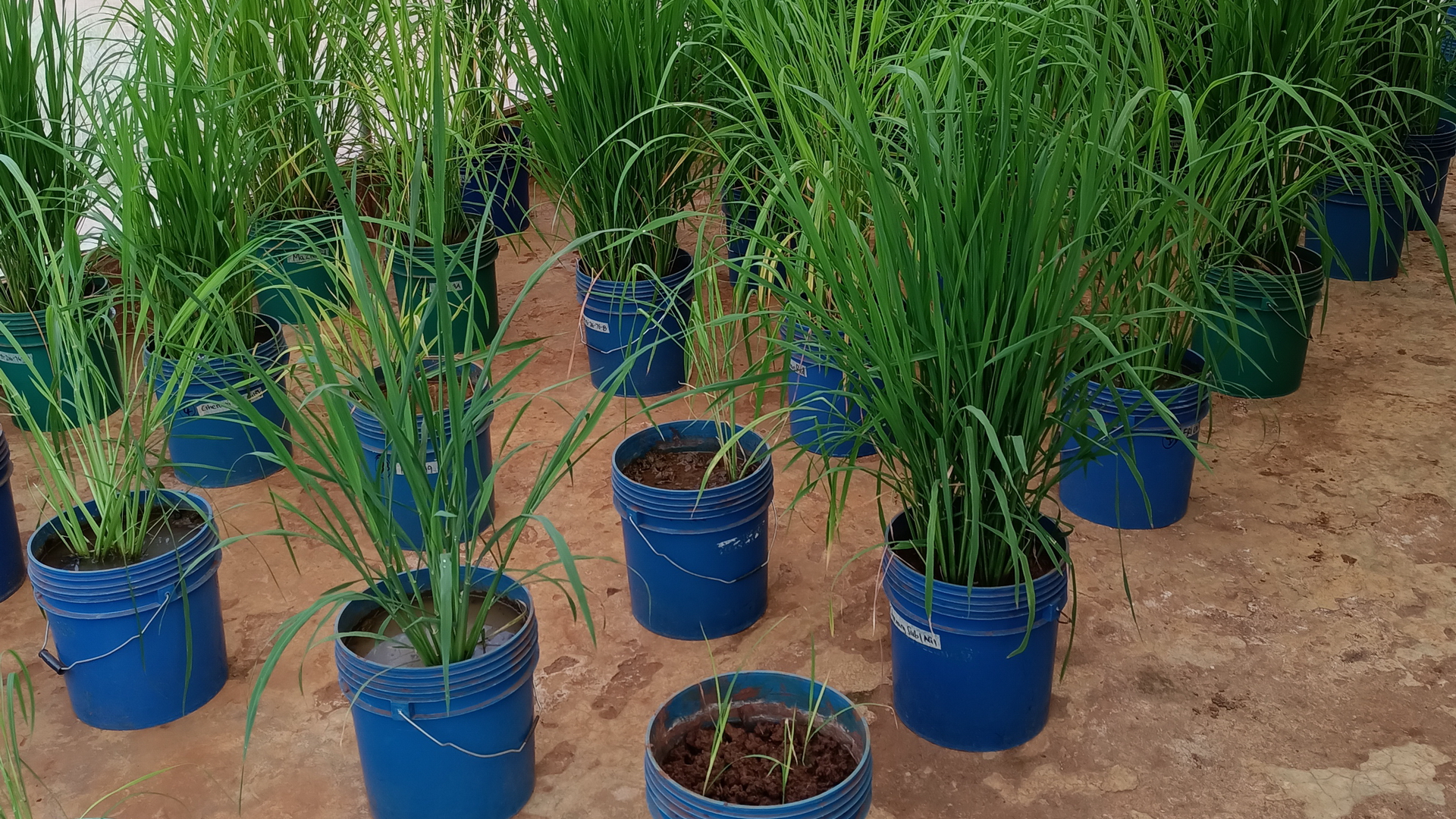Multiplication of rice seeds in our "Climate-smart African rice" project
In April last year, our project entitled Climate-smart African rice commenced due to a grant from Danida. We had planned for giant kick-off meeting at Sokoine University of Agriculture (SUA) in Morogoro, Tanzania but the pandemic caused a serious halt in project activities. We have kept momentum with monthly meetings but so far, we have not been able to visit the field activities in Tanzania. The project at SUA is managed by Prof Msolla and with help from the Danida funds and her competent staff, a tatty screenhouse has now been refurbished and so that staff and students can grow rice under semi-controlled conditions.
As a first step, the screenhouse has been used to multiply a collection of seeds that was obtained from another project partner, the International Rice Research Institute (IRRI) with their headquarters in Los Baños, the Philippines. SUA only received a small number of seeds, and these have now been germinated and cultivated in order to obtain enough seeds for experiments in the lab as well as under field conditions.
Here at the University of Copenhagen, we are unable to grow rice to maturity in any predictable manner so we rely on a steady supply of seeds from the extensive seed bank at IRRI. We have also received around 50 genotypes from SUA, which we are going to growth and test for abiotic stress tolerance under lab conditions.
Now that we are slowly catching up with the project plan, you can expect to see more regular news from the project here on this blog.

The many genotypes that are currently being multiplicated behave very differently. Some germinate slowly and therefore the growth is lacking behind of others. There are also big differences in the time it takes for each genotype to flower and produce seeds and these differences need to be managed in order to obtain meaningful results from side-by-side comparisons of tolerance to abiotic stress such as flooding and salinity. Photos are courtesy of Dr. Fitta Sillo, IRRI.
As a first step, the screenhouse has been used to multiply a collection of seeds that was obtained from another project partner, the International Rice Research Institute (IRRI) with their headquarters in Los Baños, the Philippines. SUA only received a small number of seeds, and these have now been germinated and cultivated in order to obtain enough seeds for experiments in the lab as well as under field conditions.
Here at the University of Copenhagen, we are unable to grow rice to maturity in any predictable manner so we rely on a steady supply of seeds from the extensive seed bank at IRRI. We have also received around 50 genotypes from SUA, which we are going to growth and test for abiotic stress tolerance under lab conditions.
Now that we are slowly catching up with the project plan, you can expect to see more regular news from the project here on this blog.

The many genotypes that are currently being multiplicated behave very differently. Some germinate slowly and therefore the growth is lacking behind of others. There are also big differences in the time it takes for each genotype to flower and produce seeds and these differences need to be managed in order to obtain meaningful results from side-by-side comparisons of tolerance to abiotic stress such as flooding and salinity. Photos are courtesy of Dr. Fitta Sillo, IRRI.

